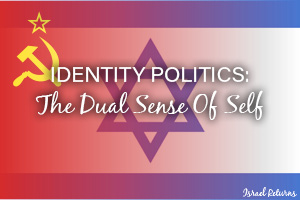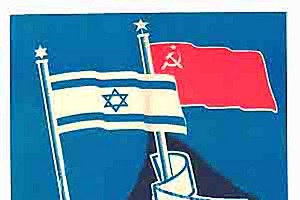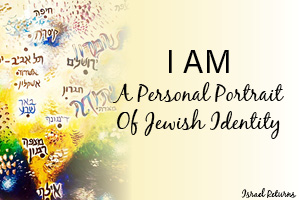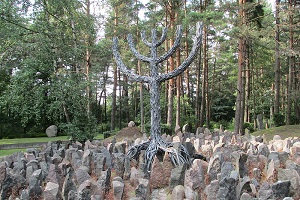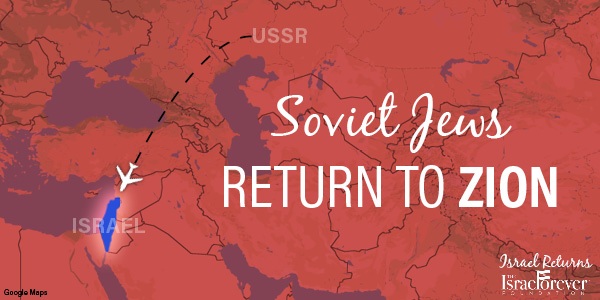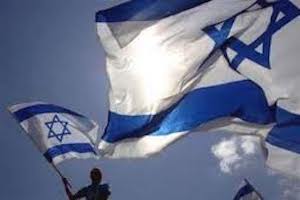The Unknown Heroes: Israel's Role in Achieving Freedom for Soviet Jews
by Israel Forever
While most of the history about the Soviet Jewry movement is focused on the activism that took shape in the United States, it was key event and instrumental leaders from within Israel who made the emigration and immigration of over 1.5 million Russian Jews possible.
In a meeting with refuseniks who had been released from Soviet imprisonment, Elie Wiesel once asked, "Where did you get the courage to stand up to what was then an empire of fear and terror? You had no way to learn about Jewish history. Even before (Andrei) Sakharov and the dissident movement, you dared to come out and claim allegiance to our people and to its history and tradition. How did you do it?"
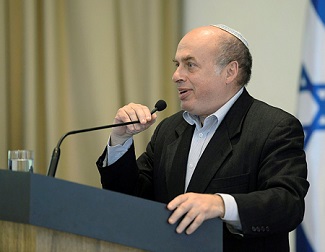
® 2018 Photo by Mark Neyman
It was Natan Sharansky who replied: "Where did we get our strength? Even if you knew nothing (about Judaism) and are separated from your people, when you realize that history didn't start for you with your birth or in 1917, but thousands of years ago; when you realize that history is on your side and God is on your side, you are never alone."
This sense of connection was fostered not only through the personal awareness passed down from generation to generation. It was the secret efforts of Nehemia Levanon, an elderly Estonian-born Jew and ex-kibbutznik, that helped keep the spark of Judaism alive
In covert activities, deemed as illegal by the Soviet government, Levanon had been actively encouraging Zionism since the Stalin era.
The "good old days" for Jews under Soviet communism lasted only a short period in the early years after the revolution. Only then did the new regime tolerate, if not encourage, Yiddish culture and education. The very existence of the Jewish section of the Communist Party, Yevsektsiya, was short-lived. Similarly experiments such as the Jewish settlements in the Crimea, and the much publicized project of the Jewish autonomous region in Birobijan suffered the same fate. Jews as a nationality apparently did not fit into the Stalinist mold of a multinational Russian-dominated Soviet empire.
Jews who saw themselves as a nationality were not to be trusted. All elements of Jewish national identity were expected to assimilate and disappear as quickly as possible. Jewish religious activities were confined to local synagogues. No nationwide Jewish organization or association was permitted. Even the slightest contact with Jews in the West was not allowed. Jews in the Soviet Union were effectively walled in. As far as Israel and world Jewry were concerned, Jews in the Soviet Union had become almost a lost tribe.
It was only during World War II that some hope for Soviet Jews was aroused. In its critical days, the Soviet Union felt compelled to create the so-called Jewish Anti-Fascist Committee. A number of prominent Jewish writers, many of them well-known in the West, were drawn into it. They were expected to mobilize public support for the Soviet war effort, particularly among the Jews in the United States. Those of us in Eretz Yisroel, the land of Israel, were excited, and even entertained the hope that ties with "the lost tribe" would be renewed. We raised funds for ambulances that were driven to Iran, and handed over to Soviet army units. However, when the war ended, the Iron Curtain was dropped. The era of the cold war settled in, and our hopes melted away.
In 1948, a new flicker of hope appeared. The Soviet Union voted for the establishment of a Jewish state in part of Palestine. In Moscow, a large crowd of Jews followed Golda Meir, Israel's first ambassador to the Soviet Union, as she walked to the synagogue. Sadly, however, the last years of Stalin's reign became the black years for Jews in the Soviet Union. The last vestiges of Jewish cultural life were eliminated; many synagogues were closed; and those remaining were put under the watchful eye of the Committee for Cults and Religion. In 1952, Yiddish writers were secretly shot.
A vicious, thinly-disguised campaign of anti-Semitism was launched against so-called international, cosmopolitan, unpatriotic citizens who were allegedly not to be trusted. A number of Jewish physicians were arrested, accused of a plot to poison Soviet leaders. An atmosphere of pogroms was brewing. "Israel's Role in the Campaign" from A Second Exodos: The American Movement to Free Jews, p. 70
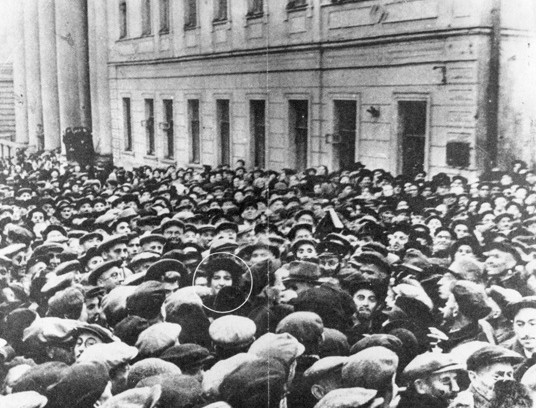
Israeli ambassador to the Soviet Union Golda Meir, surrounded by a crowd of 50 000 Jews near Moscow Choral Synagogue on the first day of Rosh Hashana in 1948
Under his leadership, a secret unit known as the Lishkat Hakesher (Liason Bureau) had been established as early as 1952, when faint cries of distress were heard from the Soviet Union. Even at the birth of the state, Isser Harel, then head of the Mossad, and Shaul Avigur, who headed the illegal immigration movement before 1948, pondered what the young Jewish state could do to save Soviet Jews.
With the approval of a plan by David Ben-Gurion, the secret struggle for Soviet Jewry began under the code name "Bilu," an acronym from a verse from Isaiah “Beit Yisrael Lechu u’Nelcha” - House of Israel Get up and Go” - otherwise known as Nativ. The name echoed the passion and commitment of the BILU from the late 1800s who had migrated from the Russian lands to Palestine, determined to help build the fledgling Jewish homeland.
Levanon, his wife and two other families - all BILU agents - joined the newly-established Israel Embassy staff in Moscow.Officially listed as agricultural attache, their task was the secret distribution of prayer books, Bibles, dictionaries and pictures of Israel to homes and clandestine communities of Jews, forced to hide their identity and practice from the public eye.
In 1955, when the Soviets arrested 30 Jews and expelled the Bilu diplomats, implementing additional anti-Jewish measures, the Israeli government worked to arouse world opinion on the plight of Soviet Jews. The Liason Bureau was thus set up for explicitly that purpose. Attaches at Israeli embassies around the world were assigned the job of organizing local activities on behalf of Soviet Jews.
Thousands of tourists went to the Soviet Union as clandestine envoys of Zionism and Jewish culture. They carried the materials concealed in their luggage, which they handed over to activists at secret rendezvous meetings. Few knew it was Israel and Levanon who were behind the effort. Their efforts were increasingly successful and the struggle became a battle of wits with the Soviet authorities.
Levanon devised ways to dramatize their plight and was a key figure in mobilizing foreign governments and Jewish communities to join the struggle. Soviet Jews had continued to languish in the Gulag for their observance of Jewish tradition, for their social activism, and for their resistance to the oppressive Soviet regime. Their plight aroused increased attention as a result of the wealth information being smuggled out by individuals actively engaged with the communities living within the confines of Communist Russia.
In 1967, Soviet Jews were emboldened enough to openly challenge the Kremlin. In June 1970, there was a failed attempt by Jewish activists in Riga and Leningrad to hijack an airplane and fly to Israel. The world was outraged by the severity of the sentences imposed on those caught. As a result, the first World Conference of Jewish Communities for Soviet Jewry was held in Brussels in 1971.
The Six Day War had been an inspiration for increased American Jewish involvement, but it was the encouragement by the activists and leaders of Israel that pushed American Jews to play a stronger public role in the issues facing our brethren confined behind the Iron Curtain.
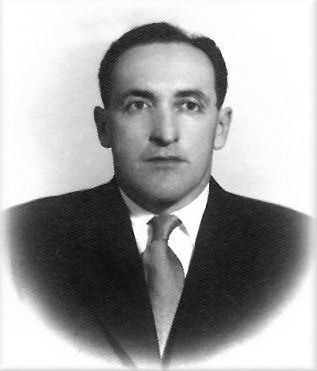
Nechemia Levanon
At the height of the first intifada in Israel, December 6, 1987 was declared Freedom Sunday and the second-largest gathering of American Jews in history took place in Washington DC. In fact, the struggle to save Soviet Jews marked a decisive shift by many Jewish Americans from African-American civil rights to a specifically Jewish cause.
In 1966, Soviet leader Alexei Kosygin stated that Soviet citizens had the right to emigrate for family reunification. This sparked the campaign for Soviet Jewish emigration movement, which adopted the slogan “Let My People Go.” Yet, despite the biblical symbolism, there was a significant controversy about their final destination. There were intense debates between those Jewish Diaspora leaders, particularly in the United States, who stressed the democratic right of “freedom of choice,” and the Israeli leadership. Thus, in the late 1980s, just as the United States ended the refugee status of Soviet Jews, reducing its financial support, one million Russians migrated to Israel in the 1990s.
In Israel, the cries for freedom has been heard from communities around the world time and time again. From the Struma to the Exodus, to Operation Solomon, Moses and Magic Carpet, each time there was a need, the local population rallied in support of those seeking refuge in the safe haven that Israel was supposed to be for all Jews in the world.
The distinctive aspect of Russian Jewish immigration into Israel lies in the ideological enterprise: the degree to which Zionism motivated and directed the immigrants specifically to that country. The immigration stream has roots predating Israel’s establishment in 1948: Between 1919 and 1948, 52,350 Jews from the Soviet Union entered Palestine, 10.8 percent of the 483,000 Jewish immigrants during that period. As of today, Russian Jews accounted for nearly 27 percent of this total (64 percent of the Russian Jews have arrived since January 1990). Approximately 14.4 percent of all Jews living in Israel in 1992 came from various parts of the former Soviet Union.
A speech to an American group of philanthropists demonstrates Levanon’s commitment to the continued fight of Israel in 1991:
We live not in a beautiful world. Wonderful things happened recently, but the world is in a turmoil. Part of the world is in a turmoil and in this world, Israel is under a tremendous pressure of knowing what is happening around us. I live a few kilometers from a country where Arabs were massacring Arabs for years. That is why I am saying to you--be patient with us. We might make more mistakes. Be patient with us.
Not that I underestimate "nisim" that can happen in Israel, the wonders that can happen in Israel. So many wonders have happened, maybe another wonder will happen. But we can't rely on it. In addition to this possibility of a wonder, we need your help in this great task of absorbing Soviet Jews, which again should be done by this great triangle--world Jewry, Israel and Russian Jewry. And before I finish, let me say to you: do not disarm, do not disarm. No one knows what is going to happen. We should continue, together, to care and work for Soviet Jews and all Jews, everywhere.
It is important the Jews everywhere in the world recognize the commitment and passion behind heroes like Levanon and others who inspire the Israel connection in Jewish identity. Israel Forever is proud to be a part of carrying on that legacy.

